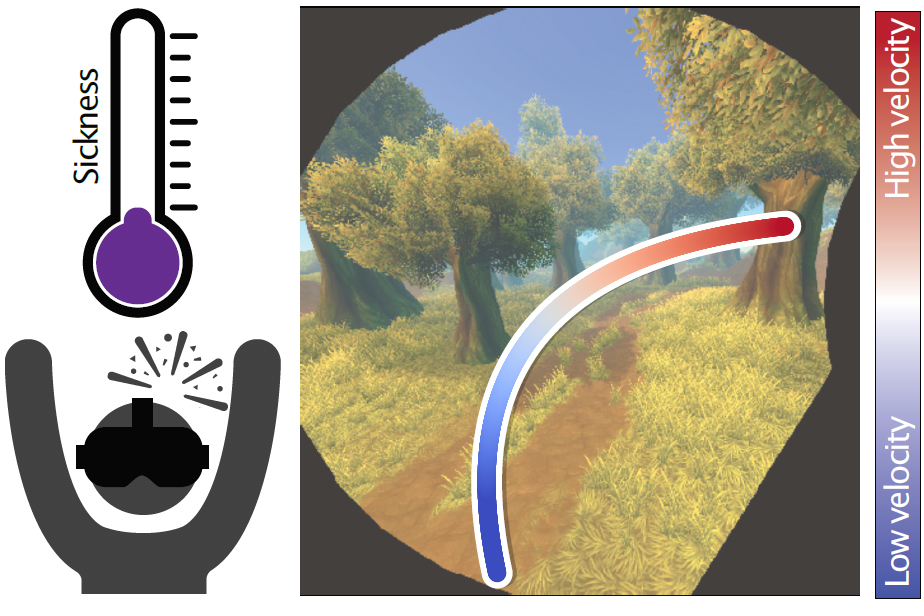Reducing Simulator Sickness with Perceptual Camera Control
Reducing Simulator Sickness with Perceptual Camera Control
Ping Hu, Qi Sun, Piotr Didyk, Li-Yi Wei, Arie KaufmanSIGGRAPH Asia 2019
PDF Video
Summary
We devise a perceptual model for, and a camera planning method to reduce, simulator sickness for VR applications.Abstract
Virtual-reality provides an immersive environment but can induce cybersickness due to the discrepancy between visual and vestibular cues. To avoid this problem, the movement of the virtual camera needs to match the motion of the user in the real world. Unfortunately, this is usually difficult due to the mismatch between the size of the virtual environments and the space available to the users in the physical domain. The resulting constraints on the camera movement significantly hamper the adoption of virtual-reality headsets in many scenarios and make the design of the virtual environments very challenging. In this work, we study how the characteristics of the virtual camera movement (e.g., translational acceleration and rotational velocity) and the composition of the virtual environment (e.g., scene depth) contribute to perceived discomfort. Based on the results from our user experiments, we devise a computational model for predicting the magnitude of the discomfort for a given scene and camera trajectory. We further apply our model to a new path planning method which optimizes the input motion trajectory to reduce perceptual sickness. We evaluate the effectiveness of our method in improving perceptual comfort in a series of user studies targeting different applications. The results indicate that our method can reduce the perceived discomfort while maintaining the fidelity of the original navigation, and perform better than simpler alternatives.

Bibtex
@article{Hu:2019:RSS,
author = {Hu, Ping and Sun, Qi and Didyk, Piotr and Wei, Li-Yi and Kaufman, Arie E.},
title = {Reducing Simulator Sickness with Perceptual Camera Control},
year = {2019},
issue_date = {November 2019},
publisher = {Association for Computing Machinery},
address = {New York, NY, USA},
volume = {38},
number = {6},
issn = {0730-0301},
url = {https://doi.org/10.1145/3355089.3356490},
doi = {10.1145/3355089.3356490},
journal = {ACM Trans. Graph.},
month = nov,
articleno = {210},
numpages = {12},
keywords = {virtual reality, head-mounted display, human perception}
}



